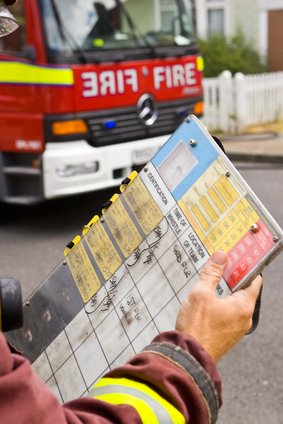

Such alarms may cause unnecessary blind panic. That’s bad enough, of course, but they also have the potential to divert emergency services away from legitimate security or fire episodes.
The end result is disruption and unwanted expense. Ultimately, there could even be loss of life.
Focusing on false fire alarms, if they occur too often in, say, a commercial building may result in ‘cry wolf syndrome’. Eventually, there’s a danger that staff will become complacent and not act swiftly and responsibly whenever an alarm activation – genuine or not – occurs.
In addition, if the fire services are forced to travel through dense traffic at high speeds to attend what they believe to be a genuine emergency (but which in fact isn’t), members of the public – not to mention fire crews themselves – are subjected to unnecessary and possibly fatal risk.
Turning to security alarm systems, at times the actual percentage of false alarm calls initiated by end user error (still the most common cause) or alarm equipment itself has topped 92% of all alarm activations generated on a national basis.
Put simply, this isn’t acceptable. It’s a scenario that demands a satisfactory solution.
Addressing the problem
Back in 2000, the Association of Chief Police Officers (ACPO) published a policy entitled: ‘Police Response to Security Systems’. This was revised as recently as April 2012, and a further appendix added in January of last year.
The ACPO Security Systems Policy states the police service will only attend monitored intruder alarms that confirm activations. An alarm is confirmed when a second detection device is activated during the same intrusion event.
There are three levels of police response. Level 1 status is assigned to all monitored intruder alarm systems. Here, the police service acts immediately when an Alarm Receiving Centre (ARC) confirms activation. If the police respond to three false alarms at the same premises in a given 12-month window, there’s a drop to Level 3. At that juncture, police response is totally withdrawn and then insurance cover will be a major headache.
In terms of Level 2 designation, the police service will attend an alarm event as soon as possible after having been alerted by ARC staff (and taking into account available resources).
The police service will not attend the aforementioned Level 3 alarms unless someone (i.e. a member of the public) reports having witnessed a crime. Systems will remain at Level 3 status until they’ve been free from false call-outs for three consecutive months.
End users can take their own steps to reduce false intruder alarms. For example, all alarm systems should be regularly checked and maintained by qualified engineers.
In a similar vein, those same engineers must make sure that equipment like air conditioning units doesn’t impinge upon alarm system operations.
Harking back to end user error, all users have to be fully trained on system operation. If a false alarm does occur, investigate what happened and instigate measures for the avoidance of repeat scenarios.
From a practical perspective, the ARC must be informed if premises are being opened or closed outside of normal working hours. Similarly, security service providers should always be notified if any building work might affect alarm system operation.
Further, always check there’s nothing obstructing detection devices/sensors. Alarms must be deactivated within allocated times and before anyone visits secured areas.
Best practice
To help prevent false fire alarms – or ‘unwanted fire signals’ – it’s very much the case that safe working practices are paramount.
First, any fire risk assessment for the premises must be up-to-date. All fire alarm/detection systems have to be properly designed, installed, commissioned, managed and then maintained in accordance with accepted Best Practice.
Nominated staff (ie Fire Wardens) must be appointed and trained to deal with fire events. They should know how and where to safely evacuate employees.
As with security alarms, all false fire alarms should be investigated and remedial action taken to prevent recurrence. Incidents must be recorded in a designated log book.
Find out more at IFSEC International and FIREX International 2014
Raman Chagger, senior consultant at LPCB and BRE Global will take to the stage at FIREX International in June to discuss ‘The common causes of fire false alarms and strategies to reduce their occurrence’.
Education is a major focus at IFSEC International – register here – and FIREX International – register here – the world’s premier security and fire exhibitions, with dedicated academies offering attendees best-practice advice combating false alarms and using the latest fire-prevention technology.
Taking place from 17-19 June, IFSEC International and FIREX International are part of the Protection & Management Series, which also includes the Facilities Show, Energy & Environment Expo, Safety & Health Expo and Service Management Expo.
Supported by the BSIA, ADS, ASIS and The Security Institute IFSEC International focuses on all aspects of intruder detection. At FIREX International, which is supported by the ASFP, FIA, FPA and LPCB, more than 170 solutions providers will showcase the latest technology in fire detection and prevention.
Free Download: The Video Surveillance Report 2023
Discover the latest developments in the rapidly-evolving video surveillance sector by downloading the 2023 Video Surveillance Report. Over 500 responses to our survey, which come from integrators to consultants and heads of security, inform our analysis of the latest trends including AI, the state of the video surveillance market, uptake of the cloud, and the wider economic and geopolitical events impacting the sector!
Download for FREE to discover top industry insight around the latest innovations in video surveillance systems.